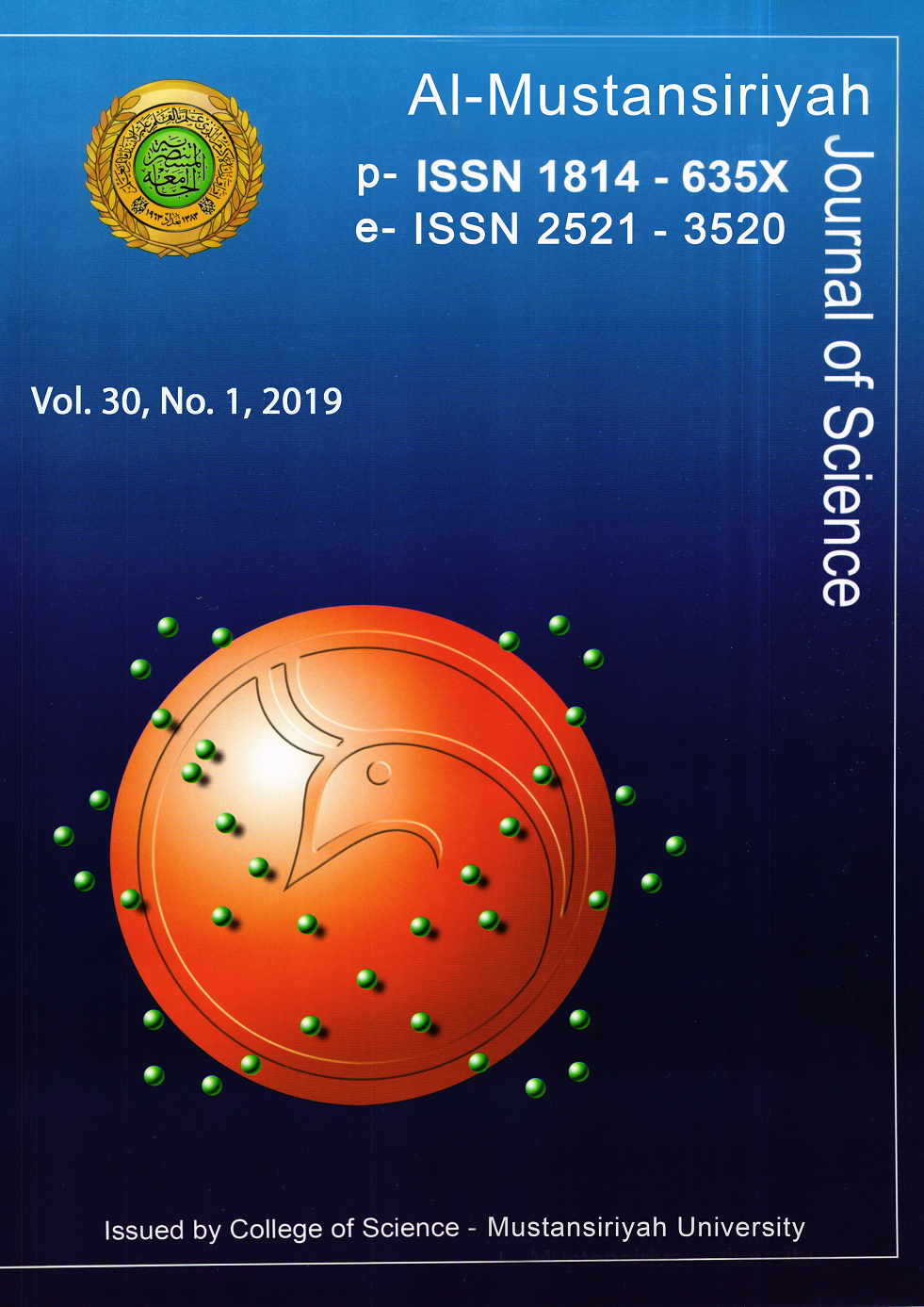Comparing study of CuO synthesized by biological and electrochemical methods for biological activity
DOI:
https://doi.org/10.23851/mjs.v30i1.389Abstract
In the present work, copper oxide (CuO) nanoparticles have been synthesized by two methods (electro chemical and biological method).The synthesized nanoparticles characterized by x-ray diffraction (XRD), Scanning Electron Microscopy(SEM) and transmission Electron Microscopy(TEM). results show that to copper oxide (CuO) nanoparticle have average size of (11-15)nm of electrochemical method and (6-12 ) nm of biological method by different technique CuO nanoparticles were applied to study the inhibition of bacterial using (staphylococcus and pseudomonas). The antibacterial activity of CuO nanoparticles show a higher inhibition of pseudomonas bacteria when a compared with staphylococcus bacteria.Downloads
References
G. Shobha, M. Vinuthaand S. Ananda. (IJPSI). 2014, 3, 8:06-28-38.
D.V.Fernando, K.D. Gautom, A. Aamir, M.K. Ian and K.Dietmar. PLOS ONE. 2014, 9, 2:e88723.
M.S. Yeh, Y.S. Yang, Y.P. Lee, H.F. Lee, Y. Yeh, and C. Yeh. (JPC). 1999, 103, 33:6851-6857.
[Crossref]
Y.H. Kim, D.K. Lee, B.G. Jo, J.H. Jeong, and Y.S. Kang. Colloids and Surfaces A. 2006, 284-285:364-368.
[Crossref]
J. Hambrock, R. Becker, A. Birkner, J. Wei, and R.A. Fischer. Chemical Communications. 2002, 1:68-69.
[Crossref]
PMid:12120314
K.J. Ziegler, R.C. Doty, K.P. Johnston, and B.A. Korgel. (JACS). 2001, 123, 32:7797-7803.
[Crossref]
PMid:11493053
S.K. Haram, A.R. Mahadeshwar and S. G. Dixit. (JPC). 1996, 100, 14:5868-5873.
[Crossref]
I. Lisiecki, M. Björling, L. Motte, B. Ninham, and M. P. Pileni. Langmuir. 1995, 11, 7: 2385-2392.
[Crossref]
A.A. Ponce and K.J. Klabunde. (JMC).2005, 225, 1: 1-6.
[Crossref]
I. Haas, S. Shanmugam, and A. Gedanken. (JPC). 2006, 110, 34:16947-16952.
[Crossref]
PMid:16927986
E.K. Athanassiou, R.N. Grass, and W.J. Stark; Nanotechnology. 2006, 17, 6:1668-1673.
[Crossref]
PMid:26558576
L. Chen, D. Zhang, J. Chen, H. Zhou, and H. Wan, Materials Science and Engineering A. 2006, 415, 1-2: 156-161.
[Crossref]
A.A. Athawale, P.P. Katre, M. Kumar, and M.B. Majumdar. Materials Chemistry and Physics. 2005, 91, 2-3:507-512.
[Crossref]
A. Ameer, S.A. Arham, O. Mohammad, S.K. Mohammad, S.H. Sami and M. Adnan. (IJN). 2012, 7: 6003-6009.
V. Vinod, P. Thekkae and C. Miroslav. Int J Nanomedicine. 2013, 8: 889-898.
K. Phiwdang, S. Suphankij, W. Mekprasart and W. Pecharapa. Energy Procedia. 2013, 34:740 - 745 .
[Crossref]
Y. Abboud, T. Saffaj, A. Chagraoui, A. El Bouari, K. Brouzi, O. Tanane and B. Ihssane. Appl. Nanosci. 2014, 4:571-57.
[Crossref]
Downloads
Key Dates
Published
Issue
Section
License
(Starting May 5, 2024) Authors retain copyright and grant the journal right of first publication with the work simultaneously licensed under a Creative Commons Attribution (CC-BY) 4.0 License that allows others to share the work with an acknowledgement of the work’s authorship and initial publication in this journal.






















